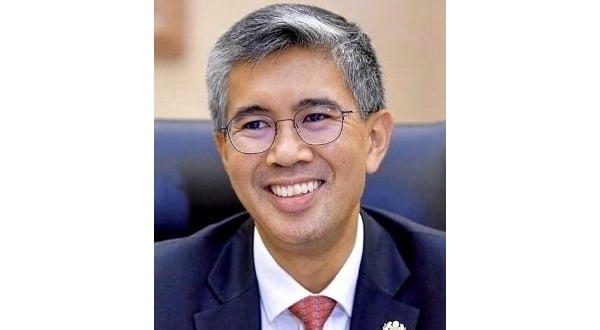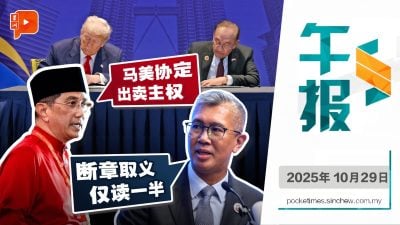
In recent months, several parties have been aggressively lobbying for the Government to allow further early withdrawals by EPF contributors from their retirement savings.
Let me reiterate that it was the Government that first mooted this idea back in 2020, and it was only made possible after careful consideration and thorough financial and economic evaluation. The voices that are now inciting the rakyat on this issue were never involved in that decision hence are not privy to the numerous complications and impact analysis. Yet, these provocateurs are intent on exploiting the situation, and have laid siege to EPF and the Government.
The EPF retirement system is based on mandatory contributions from employees and employers, a sacred responsibility safeguarded by the EPF and the Government. Thus far, EPF contributors have always been able to access their Account 2 for specific purposes such as purchasing a home or financing their medical treatment.
To this end, it is important to remember that the EPF’s primary objective is to provide for the retirement needs of workers. This is why we cannot allow continuous withdrawals, especially from contributors’ Account 1.
Malaysia is expected to become an ageing nation by 2030, which is just eight years away. If the elderly population is unable to meet their basic needs, the financial burden will be borne not only by the Government, but also by future taxpayers.
It is the responsibility of the Government to ensure the long-term welfare of its people by providing solutions to both future and current challenges. That is why previous administrations had been firm in safeguarding the members’ retirement fund in EPF. For example, in 2014, major floods hit several states including Kelantan and Pahang, affecting over 300,000 households, with many losing their homes and cars.
Despite the fact that some flood victims lost everything in the disaster, the Government then was adamant about not allowing EPF contributors to touch their old-age savings, not even one sen. Instead, the Government assisted the victims to rebuild their lives through other means. Today, the Government is using the same approach for the flood victims.
Overall, the Government has announced a slew of initiatives aimed at assisting the people. Among them are Bantuan Prihatin Rakyat (BPR); Bantuan Khas COVID-19 (BKC); Bantuan Kehilangan Pendapatan (BKP); Bantuan Wang Ihsan (for victims of natural disasters); monthly welfare aid, and interest-free financing with a six-month repayment moratorium.
In considering this matter, we must also note the following facts:
a. The issue of contributors’ insufficient retirement savings predates the pandemic. Today, nearly half of all EPF contributors, or approximately six million people, have savings of less than RM10,000. In other words, even if additional i-Citra withdrawals were allowed, these six million contributors would not benefit from the initiative.
b. The EPF has recommended that contributors should have at least RM240,000 when they retire. Based on the assumption that they will live another 20 years, they have RM1,000 per month for their living expenses and for medication, if required. Imagine if they only have less than RM10,000 right now. If additional withdrawals under i-Citra were allowed, an estimated seven million contributors would have savings less than RM10,000. Even if they could increase their savings tenfold to RM100,000 when they retire (which is quite improbable), they will only have an average of RM500 per month in living expenses when they retire. Even more tragic is the fact that over four million contributors have savings of less than RM1,000.
c. The Government has already allowed contributors to make sizable withdrawals. Under i-Lestari, i-Sinar and i-Citra, contributors have withdrawn between RM21,000 to RM71,000 since last year. Cumulatively, seven million contributors have withdrawn RM101 billion.
d. Around 74 percent of the contributors who have less than RM10,000 in their savings are Bumiputras. More worryingly, 79 percent of them have savings less than RM1,000. Why would those ostensibly championing the welfare of the Bumiputra, particularly the Malays, continue to lobby the Government to allow more EPF withdrawals, knowing that the community has very little saved for their old age? What are their motives and intention?
e. Even union activists are opposed to further withdrawals. Representatives from NUBE, CUEPACS, NUDIW, UNI-MLC and MTUC have previously issued statements expressing their opposition to the move, citing concerns about how it would affect workers’ welfare in the future.
There are also other factors involving the equity and financial markets, as well as the confidence of local and foreign investors. Here’s a summary:
a. EPF plays an important role in the domestic equity and bond markets by generating dividends to contributors, as well as providing liquidity to both markets. EPF’s investments in the equity market is around 16 per cent of the total market capitalisation which is approximately RM1.7 trillion. Meanwhile, its investments in government bonds is around 26 percent (or RM247 billion) of the total size of RM950 billion. EPF also holds 21 percent of corporate bonds (or RM166 billion) with a size of RM791 billion.
b. If further withdrawals were allowed, the EPF would be forced to liquidate its holdings in equity and bonds, both domestically and abroad, creating market uncertainties; halt investments for the next three to six months and reduce its participation in the domestic markets for the interim period.
c. These will have a negative impact on both equity and bond markets, given EPF’s role in providing liquidity, as well as on dividends paid to contributors. When the market is deprived of liquidity in this manner, investor confidence plummets, resulting in capital flight and exacerbating the liquidity problem. As a result, costs of borrowings will increase for all Keluarga Malaysia, whether individuals, corporate or the Government.
d. Such systemic repercussions will not only affect EPF contributors’ returns, but also have a knock-on effect on other savings or pension schemes that rely on returns from their equity and bond holdings such as members of the Retirement Fund Incorporated (KWAP), investors in PNB-managed Unit Trust schemes such as the Amanah Saham Bumiputera (ASB), as well as members of Lembaga Tabung Haji (LTH), and Lembaga Tabung Angkatan Tentera (LTAT). Overall, this will have a negative impact, including increased borrowing costs for the Government and private corporations, as well as the potential for financial market instability in the country.
e. Furthermore, the current situation has already caused concerns among contributors who wanted to keep their savings in the EPF. Currently, around RM270 billion in savings are held by those aged 55 and above, and this amount could be withdrawn at any time without being subjected to any conditions.
As I have mentioned repeatedly, as the country’s economy recovers, the Government will continue to assist the people through a variety of programs and different strategies, such as BPR, BKC, BKP, Death Benefits, BWI, monthly welfare assistance and more. The government is constantly monitoring the situation and if necessary, will improve various forms of assistance.
However, in the case of the EPF, we cannot continue to be populist by finding easy ways to allow additional withdrawals, especially since the Government has provided the largest flood relief package in history. Consider the long-term consequences, particularly for our children and grandchildren who will inherit the burden of supporting the lives of the country’s elderly who cannot afford their own retirement.
(Tengku Zafrul bin Tengku Abdul Aziz is the Minister of Finance, Malaysia.)
ADVERTISEMENT
ADVERTISEMENT






































